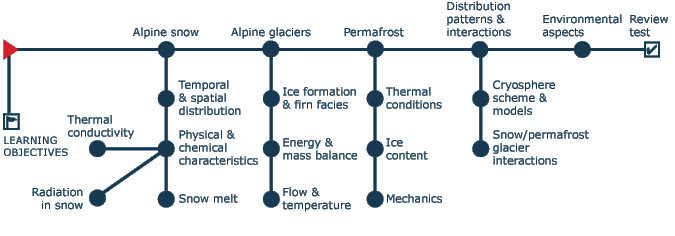 |
|
|
|
|
| Haeberli & Stöckli |
 |
|
Snow and ice are important components of high-mountain landscapes but have markedly different characteristics and functions within corresponding ecosystems. |
|
S N O W |
G L A C I E R S | |
| primarily depends on short-term developments of weather conditions and constitutes a “nervous interface” between atmo-, cryo-, hydro-, bio- and lithospheric phenomena, processes and interactions at high altitudes. | are
“safe indicators” of long-term climatic
changes. Their general shrinking tendency represents a key indication of
changes within the complex climate system that are both rapid and worldwide. |
|
Observe the possible change of mean temperature and the position of the glacier tongue of the Vadret da Morteratsch between 1973 and 2082: |
|
|
Different positions of the Vadret da Morteratsch, calculated and visualized by S. Biegger, 2003 M. Maisch illustrates a future scenario of the development around the retreating glacier. You can have a look at the glaciation in the past in the lesson Quaternary paleoenvironments - results. The Kantonsschule Zürcher Unterland produced some interesting photos and 360° panoramas of the glacier in its present state (German). |
|
|
Such changes in climate as you have seen in the animation are also most likely to induce substantial effects and long-term disequilibria within deep layers of the perennially frozen slopes mainly occurring above the alpine timberline. Due to the slow diffusion of heat in the ground, the response of permafrost – the „invisible deep disturbance“ - to climate change involves a great deal of inertia but is also very long lasting. The last part of this double lesson will give you more information about this topic. But first have a look at the characteristics of snow and glaciers. |
29 August 2011 |
||
| |
||